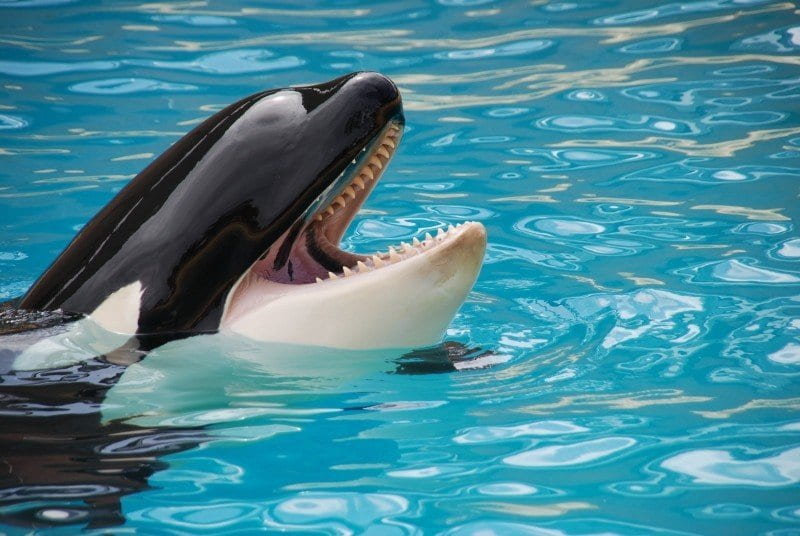
Killer whales are next-in-line when a superbug takes humans down
By Tilly Doran, 2019 Alumni.
Far above us in the food chain and more advanced than many of us realise, orcas are 100% prepared for world domination… my explanation is as follows.

We share quite a few qualities with these dolphins. Yes, dolphins. To quickly address that, orcas aka. killer whales, are not whales. They are actually the largest member of the oceanic dolphin family and these dolphins live to about 80 (females) and 60 (males) years old. This is not too dissimilar from us- according to the World Health Organisation, human females and males born in 2016 will live to approximately 74, and 70 years old, respectively.
Sexual maturity of orcas is reached between 10 to 18 years, about the same time we go through puberty. And when they do reproduce, like us, female orcas usually birth single calves or very occasionally twins. Orcas even approach menopause at the same time as us, at about 50 years old. And like our grandmothers, these post-reproductive orcas babysit their pod’s infants, teach younger whales how to be mothers, and even lead the pod.
Orca countries are a thing.
In addition to the commonalities between our lifespans, we share aspects of the way we live. Orcas belong to groups which are defined by borders, and furthermore the members’ language and possibly their behaviours- tune in to my next blog to get (orca) cultured.
An orca population is the first classification level and is based on a general geographic area, much like how we divide the continents into America, Europe and so on. Because they are so well studied, I’ll focus on the North Pacific resident population which permanently lives off the coast of British Columbia. Populations are then divided into geographically specific communities, akin to how we distinguish eastern from western Europe. The aforementioned North Pacific residents are divided into the Northern and Southern communities.
Then it gets really anthropomorphic. Within communities are acoustically defined clans. The resident communities are divided into four clans, each of which have distinct languages. These clans are unable to communicate with each other. To continue with the Europe simile, it’s comparable to a German talking to a Russian. The final classification I’ll mention is the pod which consists of individuals within a community who travel together most of the time. Members from different pods are able to communicate, but they have distinct accents and words. Like a Russian and a Belorussian speaking to each other, both are using one language, but with slight variations.
They’re surprisingly eloquent.
So orcas can talk, but surely it’s just about a sweet seal hunting spot one of them found? Scientists think it’s more complex than that. Orca languages have been thoroughly studied and it’s been found that their language can be divided up into discrete calls, variable calls and aberrant calls. Each pod has a repertoire of between 7 to 17 discrete calls and these are categorized as clicks, whistles or pulsed calls.
The craziest part- orcas vary the frequency and the format of the calls in order to convey emotional information. Furthermore, scientists suspect that there are specific modulations which are governed by a set of universal rules. Orcas of different pods and even clans can modulate their own language in these ways to communicate with each other to some degree. This is akin to us smiling. We understand regardless of the language that we speak, that this conveys happiness.
Orcas give a damn.
Emotion is evident in more than just their language. Orcas’ high emotional capacity made news headlines in 2018 when a female orca named Tahlequah demonstrated grief over the death of her calf by pushing the dead body around with her for 17 days. Tahlequah ended up swimming like this for 1600 kilometres.
This behavioural demonstration of emotion is supported by anatomical studies which have revealed that orcas possess spindle neurons. These brain cells are unique to very few species (including us) and are specialised for emotion and social interaction. They allow us to follow social interactions and feel emotion in response to another person’s emotion. The relative number of these neurons is even greater in orcas than it is in humans, and furthermore, their brains contain a larger, more complex limbic lobe than ours, noteworthy as this known to be the center of emotion in people.
Often called “non-human persons“, I am convinced that orcas have the means and emotional capacity to care for the earth which we as a race are destroying. I won’t be upset if the time for orcas to be the ruling race comes, but for those who are still unconvinced, return for my next blog to read about killer grandmas, dolphin mosh pits and how these dolphins got their misnomer.

Categories